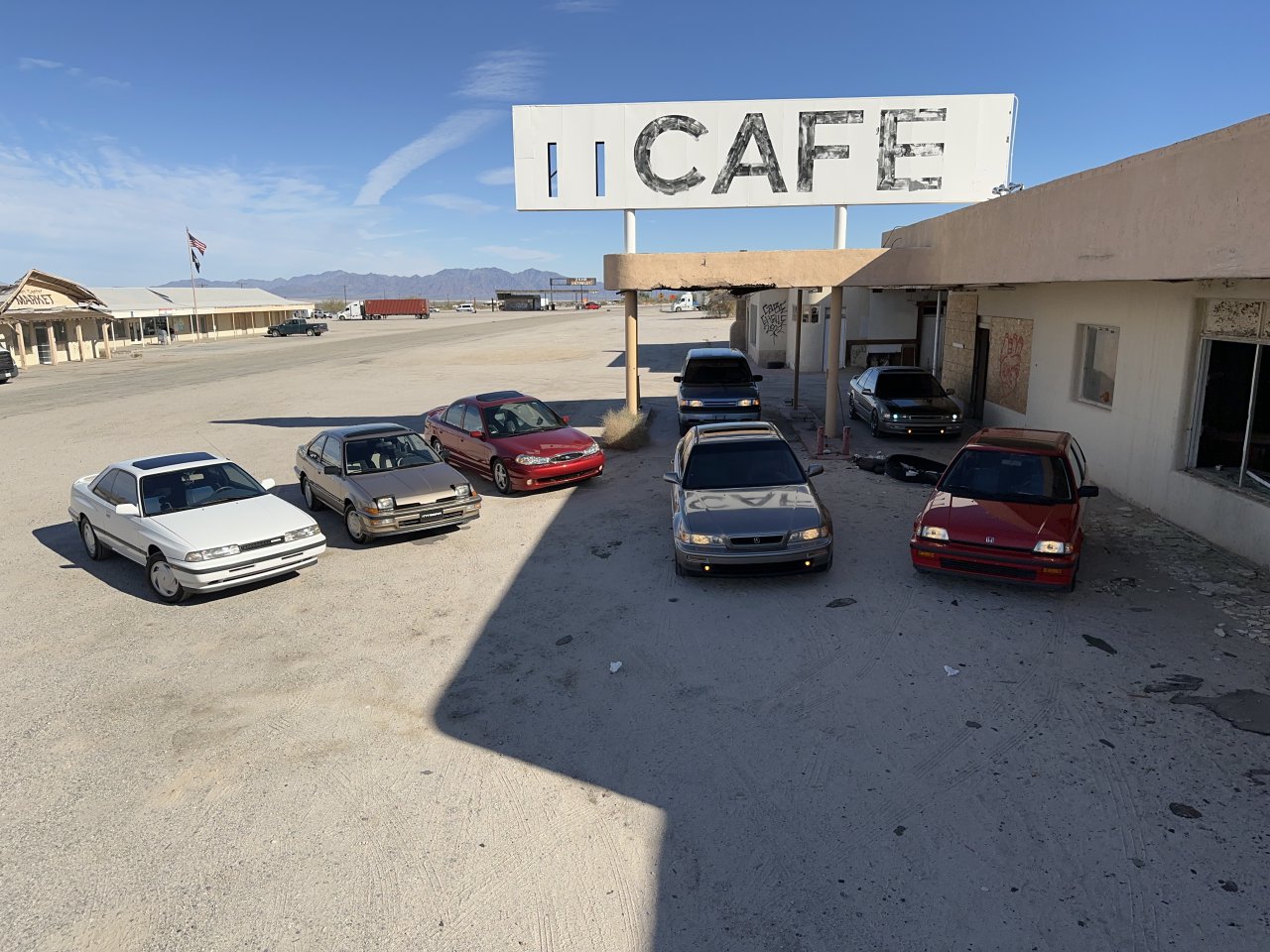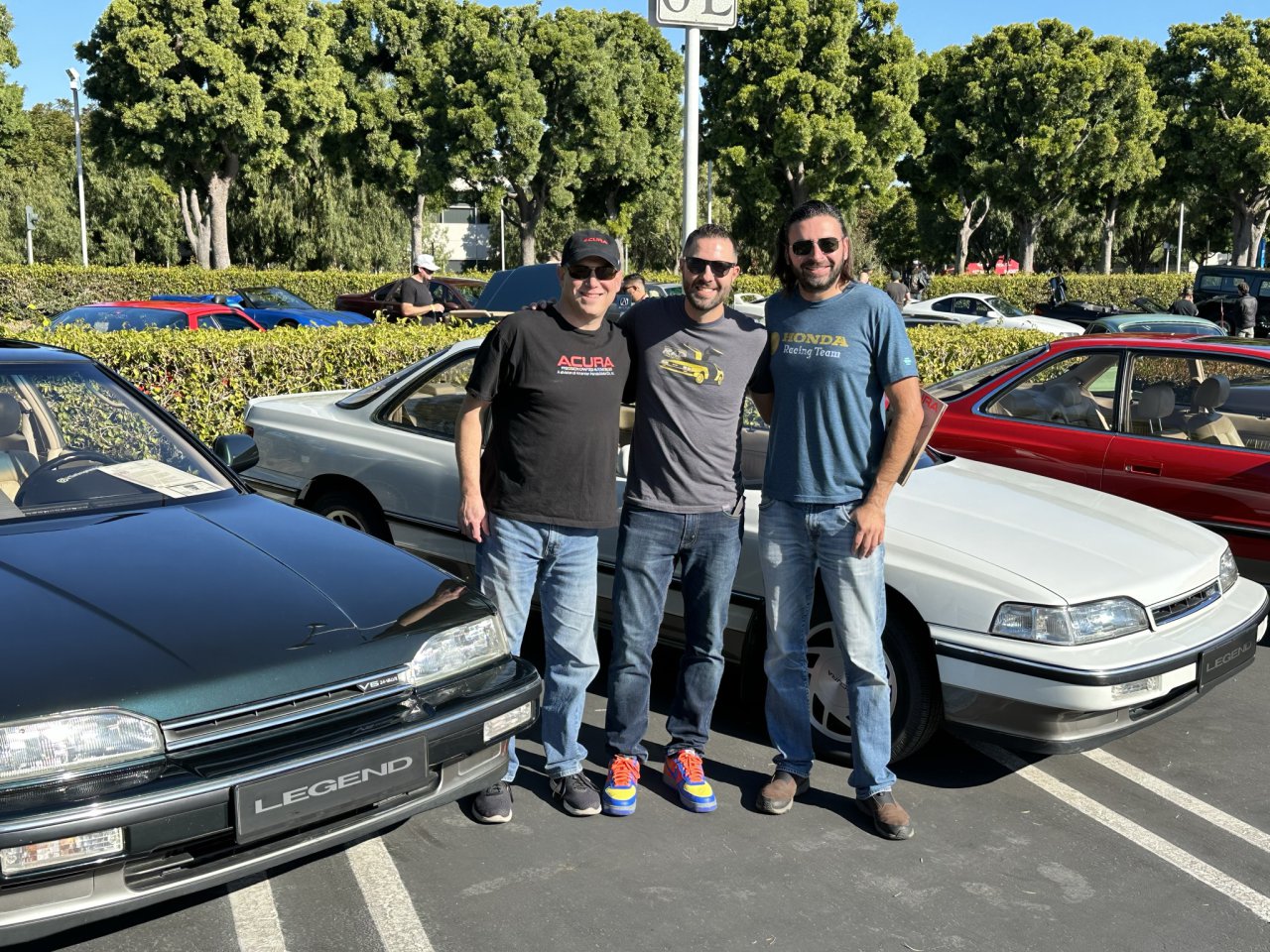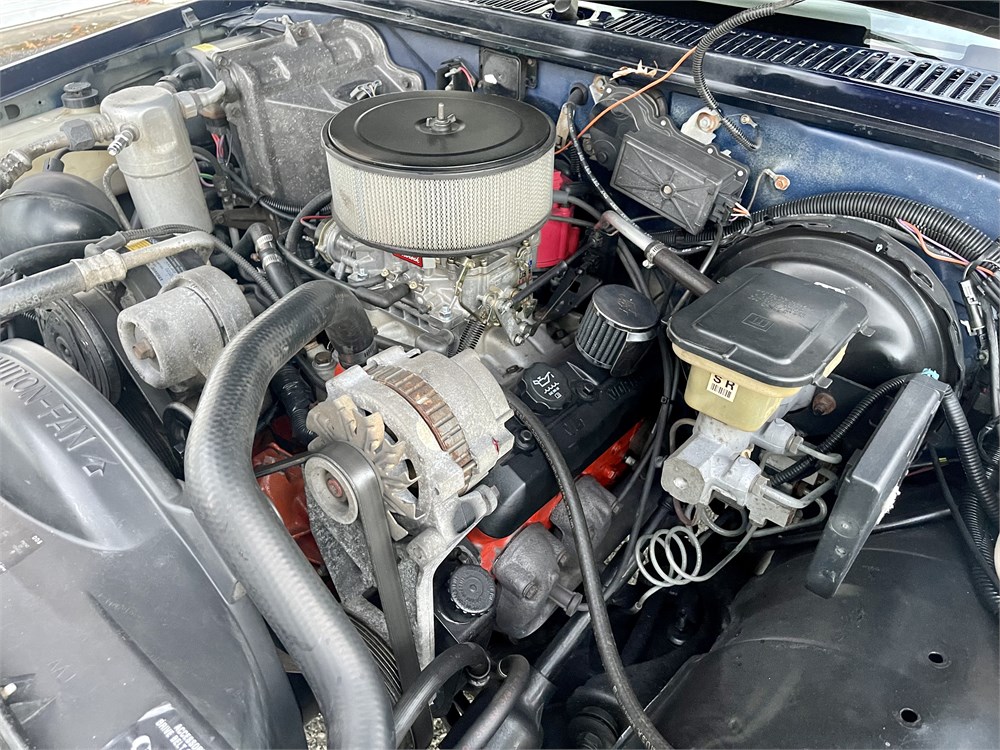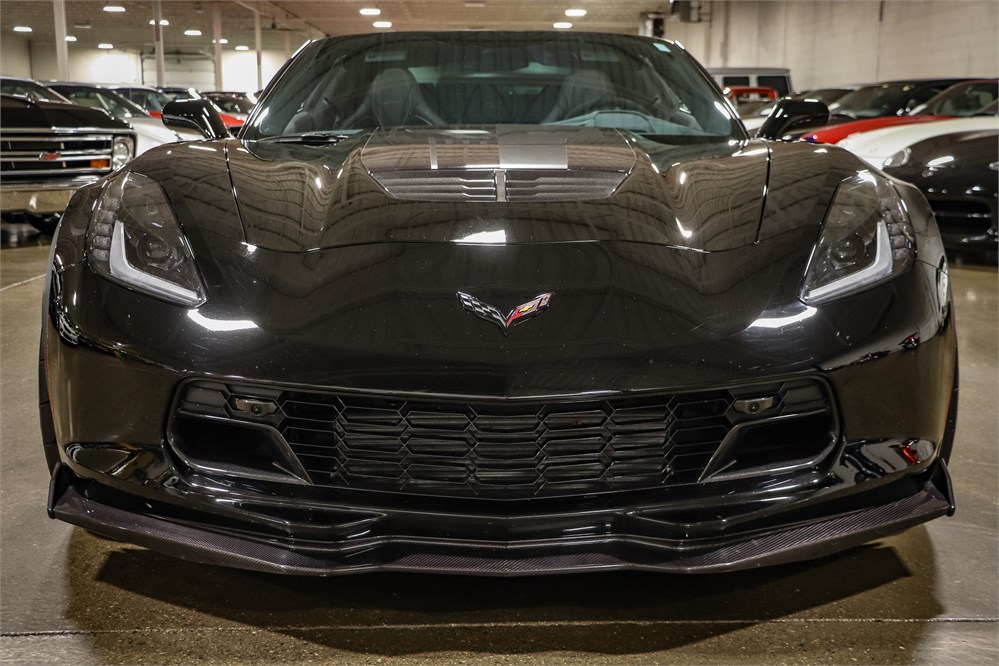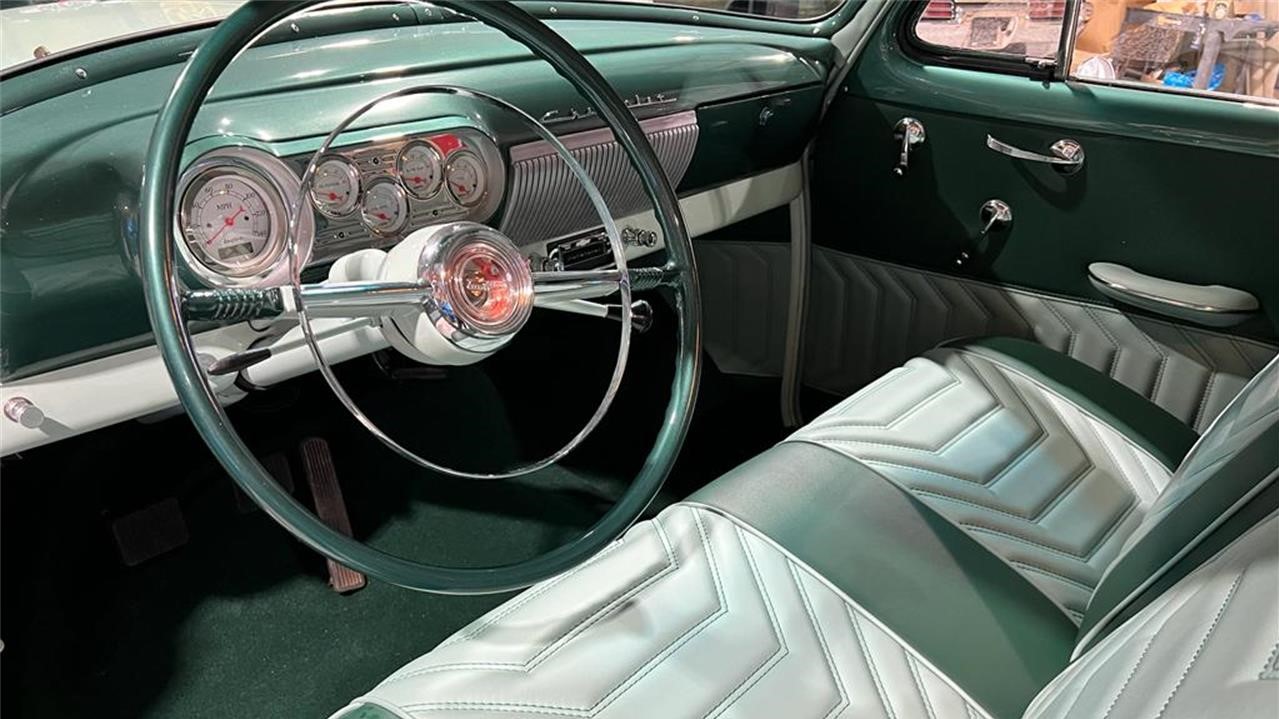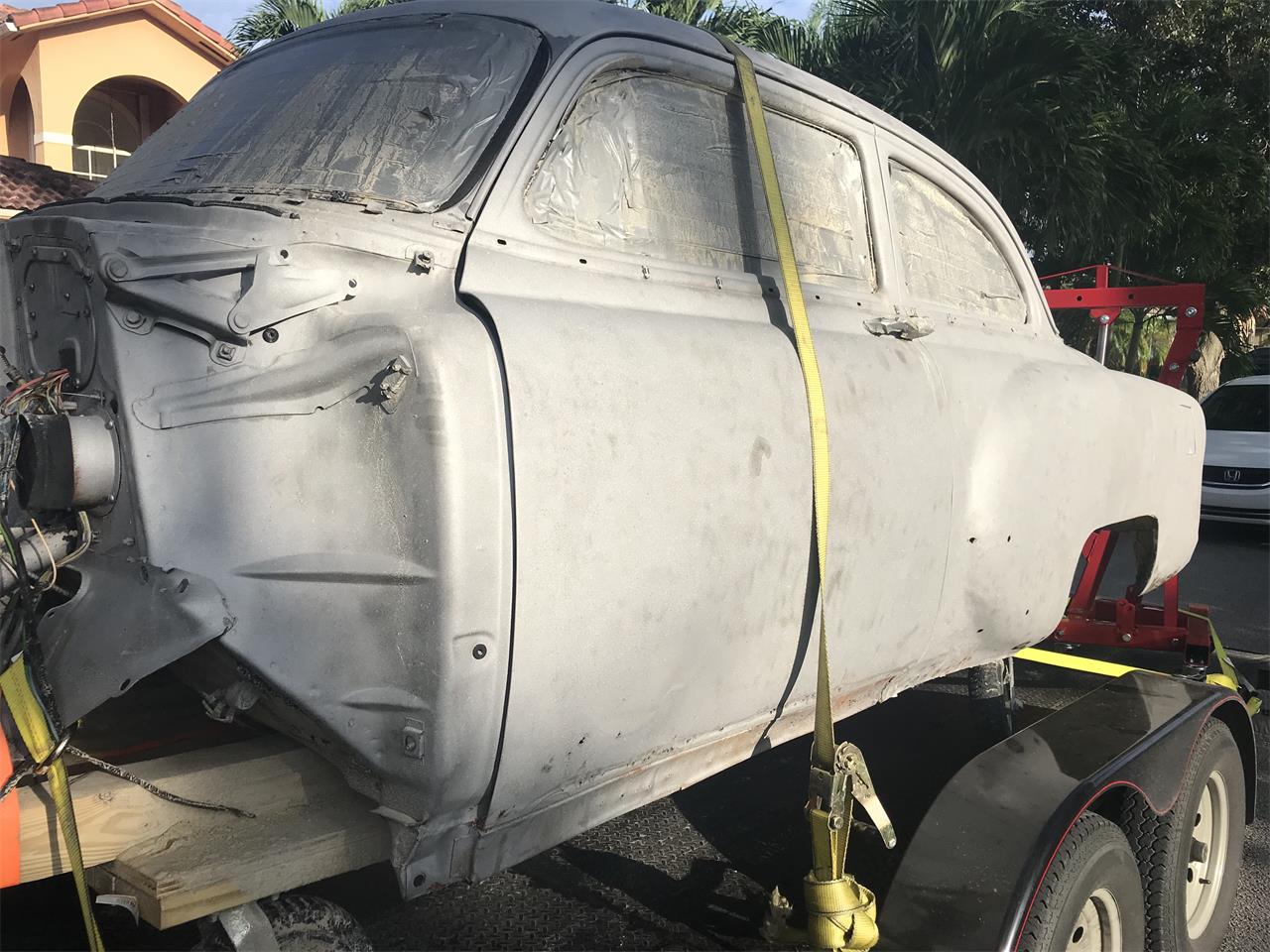Editor’s note: This article was originally published on October 21, 2020. While we realize it’s too late for some of you, we hope we can help prepare you for impending weather.
I could almost hear Will Robbins smiling at the other end of our telephone conversation. I’d just shared the story of how a set of Bridgestone Blizzak winter tires had transformed a Mazda Miata from a device of danger that had just spun on an icy interstate into an automotive snowmobile.
He said he’s heard similar stories from dozens of people.
“A lot of tire stuff is really subtle,” said the senior product manager for Bridgestone’s Blizzak winter tire line, “but you never get the ‘aha’ moment like you do when they drive on all-season or summer tires and then put Blizzaks on their vehicle.”
Or as Matt Edmonds, an executive with TireRack.com, a major national tire retailer with an extensive website of tire tests and customer feedback, notes, four-wheel or all-wheel drive may get you moving on snow and ice, but it won’t necessarily help you turn or stop. But specialized winter tires will.
Of those tires, Robbins admits that Blizzak has a majority share of the market.
However, he adds, “We have a big target on our back and a lot of competitors have products that are very close to the Blizzak level of performance.”
Indeed, in TireRack’s most recent tire tests for higher-performance winter tires, the Michelin Pilot Alpin and Dunlop SP Winter Sport challenged Blizzak’s supremacy. In TireRack’s customer survey, Blizzak is rated No.1 with Michein’s X-Ice a close second.
By the way, the winter tire market has come a long way since the days when your father put a pair of “snow” tires on the back wheels of your family sedan or station wagon. Those tires likely had tread more suited for providing traction in the snow, but that was about it.

Today, winter tires not only have specialized tread patterns for digging through snow but sipes that provide an escape for ice turned to water from the pressure of the vehicle’s weight and from changes in temperature. Modern winter tires also are produced with compounding designed for cold weather.
“Summer tires are great for track day,” Robbins explains. “The compound is sticky and soft and deals with all that heat. But it gets hard and brittle in the cold. Winter compounds are designed for the cold environment, even on dry pavement.”
Forty degrees and below is where winter tires excel, he said. However, he suggests that “when you can see your breath,” it’s time to put the Blizzaks on your vehicle.
Oh, and you put them on all four wheels, not just those that put power to the pavement.
Noting that the overall performance of winter tires has improved through the years, Robbins explained that instead of a pair of tires designed to improve grip in snow, “today’s winter tires have such different traction levels that you need all the axles to be balanced for proper performance.”
Yes, it means buying an extra set of tires for your vehicle, but there are a couple of benefits to consider beyond enhanced safety in winter. For one thing, changing tires means you’re not putting as many miles on your warmer-weather tires so you’re not replacing them as soon.
For another, you can drive year around in the same vehicle rather than having to acquire a second vehicle with 4-wheel-drive or as was popular in some locations, a “winter rat” – an inexpensive second car purchased in the fall, driven through the winter and then abandoned in the spring, if not when it stalled out or became buried during a major winter snowstorm.

But what about studs or chains for driving in the winter?
“Chains are a useful tool for what they’re designed to do, for emergency situations,” Robbins explained. “The downside is, if not used correctly, chains can do more harm than good,” damaging both road surface and tires.
In fact, it was damage caused by studded tires and chains in Japan that led to the development of the Blizzak winter tires. Metal chains were banned in Japan in the 1980, so Bridgestone set out to develop winter tires that worked just as well, and thus the Blizzak line.
Typically in the tire world, the newest tires are the best as tire companies work to leap-frog each other. Robbins notes that the Blizzak development team doesn’t “sit on the success,” but is continually working to improve the product and its cold-weather performance.
The latest Blizzak lineup includes:
WS90 for cars and minivans
DM-V2 crossover and sport utility vehicles and light trucks
LM-25 for cars equipped with run-flat tires
LM001/LM-32 for high-performance sedans and coupes
LT for commercial light trucks and vans
Prices range from $91 to $183.
“I don’t know a person who has regretted the purchase,” Robbins said, adding that people typically go from considering Blizzaks to trying them to “Wow! This is amazing!”
One way to have the experience before you buy a set is the Bridgestone Winter Driving School in Steamboat Springs, Colorado. The school has been in operation for more than 30 years. It opens when the weather gets cold enough, offers a variety of classes taught by experienced professionals — many with experience in rallying — and uses a variety of Toyota vehicles.
For more information, visit the Blizzak and winter school websites.
Even exotic supercars are occasionally subject to recalls. Lamborghini just issued one for every 2022 Countach LPI 800-4 delivered in the U.S. so far. The recall affects nine cars.
The new Countach is being recalled because of rear glass panels that may detach from the car, according to the NHTSA. Lamborghini blames a supplier error, saying in a recall report that the supplier didn’t correctly bond the glass panels to the engine covers of affected cars.
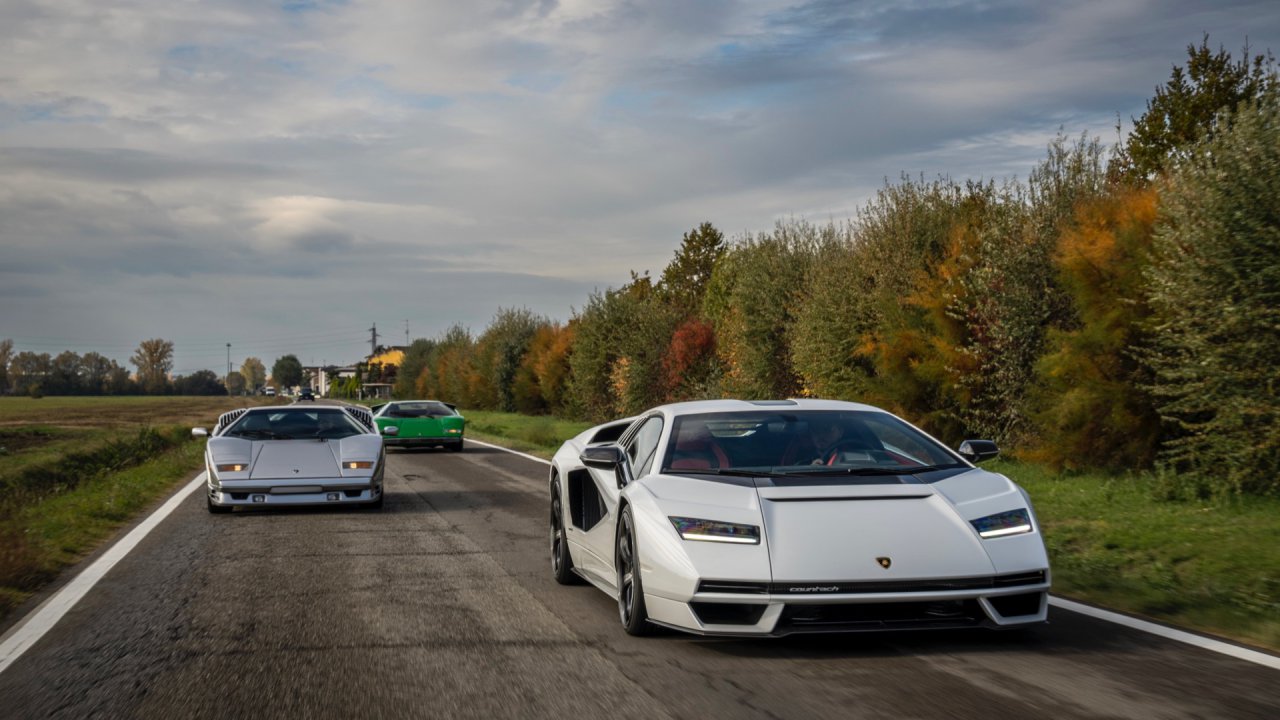
The incorrectly-bonded panels could detach from the car while driving, creating a potential road hazard, Lamborghini noted in the report. The automaker first became aware of this problem in October after receiving a report from a dealership in Qatar about a problem with one of the four glass panels on the Countach’s engine cover. Lamborghini isn’t aware of any issues with cars in other markets, however.
Dealers will inspect and, if necessary, replace the glass free of charge. Lamborghini plans to begin mailing letters to owners notifying them of the recall by Jan. 13, 2023.

Unveiled during 2021 Monterey Car Week, the Countach LPI 800-4 was built to celebrate the 50th anniversary of the Countach’s debut. Its styling is a modern interpretation of the iconic wedge-shaped original Countach, but the LPI 800-4 is based on the outgoing Lamborghini Aventador, and features a hybrid powertrain producing 803 hp.
While it’s just one of several Aventador-based special editions to launch ahead of that model’s replacement, and isn’t any quicker from 0-62 mph than the non-hybrid Aventador Ultimae coupe, the Countach LPI 800-4 had no trouble finding buyers. The entire 112-unit production run reportedly sold out shortly after the car’s reveal despite a price tag estimated to be well within the seven-figure range. Lamborghini began delivering cars earlier this year.
This article was originally published by Motor Authority, an editorial partner of ClassicCars.com.
Slap bracelets, Walkman radios, and Reebok Pump sneakers were a few of the many memorable symbols of the 1980s and 1990s. It was a time of rich culture, bright colors, and distinct automobiles.
RADwood – an event that first launched in 2017 – has the era cornered when it comes to celebrating the culture of the 1980s and 1990s. The term “classic car” typically evokes mental images of Chevy Bel Airs and Plymouth Furys. But as time moves on, the definition of “classic” moves with it. Some people – myself included – find it a little shocking to realize that a car from 1982 is now 40 years old.

While RADwood has gone on to span various parts of the country in its five-year history, one of its signature annual events is held in Southern California. This year, for the second time in a row, the American Honda headquarters in Torrance hosted the event. I registered my 1994 Acura Legend GS six-speed sedan as part of the “Royalty” contingent because its higher $100 entry fee meant more prominent parking and earlier roll-in.
The journey began on the western outskirts of Phoenix, where I met up with fellow RAD road-trippers in a 1987 Honda Civic Si, a 1989 Mazda MPV, a 1989 Mazda MX-6, a 1993 Honda Accord coupe, a 1989 Acura Integra LS, and a 1998 Ford Contour SVT. Fellow motorists and bystanders enjoyed seeing us along Interstate 10 for the 400-mile trek, I’m sure. We paused for a group photo at an abandoned gas station in Desert Center, California.
American Honda’s campus in Torrance was the perfect venue for the program. The music, fashion, and pop culture of the 1980s was alive and well, with hits from Madonna and Duran Duran setting the mood over the grounds. My friend Becky had her hair crimped for the occasion, and others dressed in leggings or track suits. Honda’s hospitality included food trucks, entertainment, and posters. I took the opportunity to wander the grounds and reconnect with many friends – many of whom I hadn’t seen since the RADwood show a year ago. Some of my favorite cars included an original and well-preserved Infiniti Q45, a 1993 Mercedes-Benz 500SL with a rare five-speed manual transmission, and very clean FJ80-series Toyota Land Cruiser.
On display during the show was Honda’s latest iteration of the venerable Civic Type R. A long-time tuner favorite, the Type R was available in Europe long before it first came to the United States in 2017. Since then, it has become a popular platform for performance upgrades and customization, akin to a modern-day muscle car. The all-new 2023 model year Type R will come with a turbocharged 2.0-liter, 315-horsepower engine.
RADwood leader Art Cervantes took the stage later that afternoon to help conduct an awards ceremony. In addition to distributing awards for the top cars in various categories, special recognition was also given to the “raddest dressed,” which went to a couple dressed in what looked to be period-correct prom attire. Best of show went to an incredibly rare (and very deserving) white 1998 Ford Explorer Saleen XP8 driven by Nick Roshon.
My 800-mile round-trip journey was 100% worth the effort and expense. I’m eager to see how RADwood grows and evolves in the coming years. Stay tuned to the RADwood website for a calendar of upcoming events.
Happy Sunday, and hopefully you are having a good holiday week despite having to watch the Detroit Lions on Thanksgiving. For those that have started Christmas shopping, or if you have yet to draft your holiday shopping list, I present a pair of souped-up Chevrolets on AutoHunter that would make a great gift for the collector car fan in your life.

The Chevy S10 pickup is a good foundation to build a sleeping hotrod with its nondescript exterior and association as a work truck, the exception being its GMC Syclone sibling.
This 1989 Chevrolet S10 available on AutoHunter features a 4.3-liter V6 engine that has been bored 0.030 over with a new camshaft, Vortec heads, Edelbrock carburetor and an aluminum intake. The engine is paired with a four-speed automatic transmission.
It’s finished in navy blue, and the only signs that it’s built for performance (and not utility) are the cowl induction hood and lowered suspension. This Chevrolet truck’s auction ends on Wednesday, November 30, 2022, at 11:00 a.m. For further details, check out its listing on AutoHunter and happy bidding.

The second half of our double feature is not subtle, nor a sleeping hotrod. Quite the opposite, but isn’t it nice to let the world know why you bought a particular car? For that bold person in your life, I present a 1,041-horsepower 2016 Chevrolet Corvette Z06 C7R.
This Chevrolet pays homage to Corvette Racing and looks ready for the track with a black exterior, carbon fiber body accents, rear spoiler and titanium Akrapovic axle-back exhaust system with quad outlets.
Exterior aesthetics aside, this Corvette makes a great gift because of its reported 1,041 horsepower and 811 lb-ft of torque. The robust power comes from a supercharged 6.2-liter LT4 V8 upgraded with ProCharger F-1A kit. As a proper sports car, it features a seven-speed manual transmission.
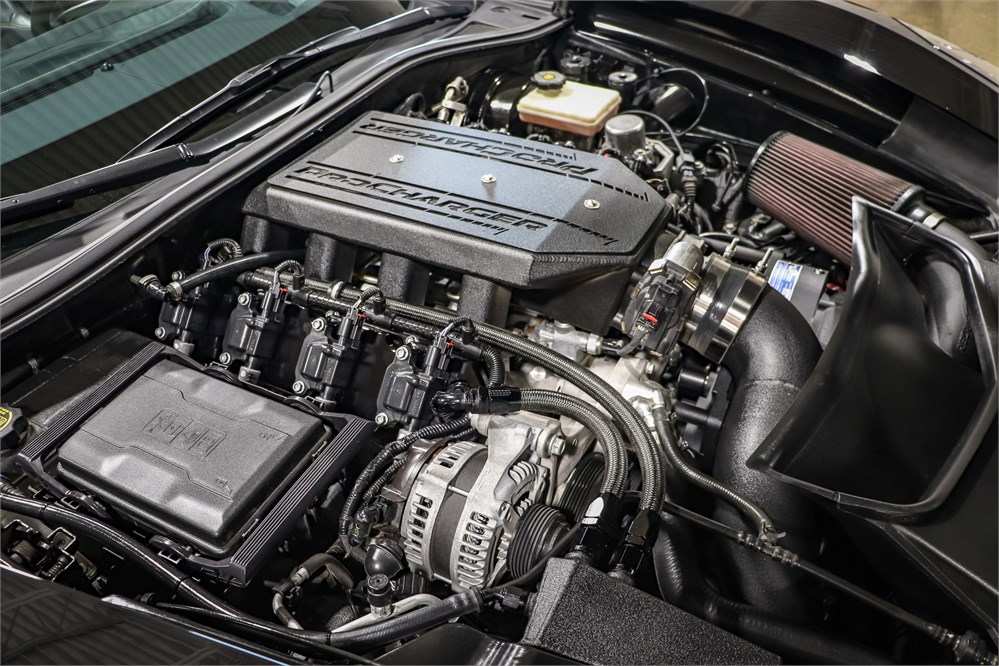
The auction for this high-power ‘Vette ends on Tuesday, November 29, 2022, at 1:00 p.m. (MST). For more details, visit its AutoHunter listing.
Historians have often pointed out the many parallels between Henry Ford and Soichiro Honda. Both came from rural areas but developed fascinations with motorized vehicles early on. Both overcame numerous setbacks on the way to establishing automotive powerhouses relatively late in their lives, career-wise. And both saw their success not so much by building on what others had accomplished rather by laying the groundwork themselves and focusing primarily on the engineering aspects of their businesses. But that’s not to cast Honda as merely the Japanese Henry Ford (as People magazine described him in 1980); as we see in this documentary of the inventor, engineer, racer, and founder of what is now the seventh largest automaker in the world.
[Editor’s Note: Photochopper Michael Sharp, whose work we’ve featured here before, thought he’d take a crack at a car currently for sale on Hemmings.com as part of our regular How I’d Build It series.]
Celebrities and actors driving customized cars is not a recent occurrence. Clark Gable once had his Duesenberg mildly customized. What if one of his fellow actors decided to do the same, but with a much different car? It’s possible that one of Gable’s peers, maybe Katharine Hepburn or Joseph Cotton, would have wanted something a little less conspicuous and more agile than a Duesey.
This 1939 LaSalle 50 Convertible Coupe makes for a perfect starting point. It may have been known as a lower-priced Cadillac, but General Motors didn’t cut corners with styling by Harley Earl. It’s too large to be made into a true sports car, but it could certainly be made a lot sportier.
The front bench seat’s really all you need anyway, right?
I’d start with shortening it by removing the rear seat area, all sheet metal, and moving the rear fenders forward to just behind the doors. The windshield would be chopped several inches. The headlights and side hood vents would be eliminated by our next modification: sectioning the body 8 to 10 inches, which makes our subject much more alluring.
To avoid a pancaked look after the sectioning, I’d also narrow the body significantly. There’s no need for bumpers because it’ll be driven to movie premieres and the best restaurants, and will cruise through the Hollywood hills, not in commuter traffic. New headlights would be hidden in the fenders ala Cord, turn signals are behind the grill vents, the taillights are cut down, and rear fender skirts complete the extensive metalwork.
Image by Michael Sharp
The frame would be modified to lower our looker several inches with z-cuts front and back. It already has an x-member, which would have to be narrowed and retained to keep the rigidity a convertible needs. Rear axle and front center link would need to be narrowed, and the other stock suspension pieces would be retained. A Cadillac V-8 engine was standard equipment, and if I were building this when the car was new, I would keep the drivetrain stock; with several hundreds of pounds of metal removed, it’ll be a lot quicker and still as reliable as a Cadillac.
If I were building it today, I’d have a new frame fabricated. I’d prefer to keep things GM, but a Corvette independent rear setup might not be wide enough, so a multilink IRS would be installed with an IFS kit up front. No bags, it’ll be built with the right static stance. An LS engine with 350 horsepower and a 6L80-E trans would be sufficient to move our new classic custom, and would be compatible with modern electronic controls. I can see Emma Stone or John David Washington behind the wheel, entrusting it with the lucky valet at Grauman’s.
Do you think it’s sufficiently sporty and suitable for celebrity sighting now? Let me know how you’d build something similar in the comments below and in the meantime check out other LaSalles for sale on Hemmings.com.
Most new-car warranties offer coverage for a maximum of five years, but when was the last time you came across a 70-year-old car under any kind of warranty? offer coverage for a maximum of five years, but when was the last time you came across a 70-year-old car under any kind of warranty?
In recognition of its upcoming 70th birthday, the Pick of the Day is a 1953 Chevrolet 150 two-door sedan listed for sale on ClassicCars.com by a private seller in Homestead, Florida. (Click the link to view the listing)
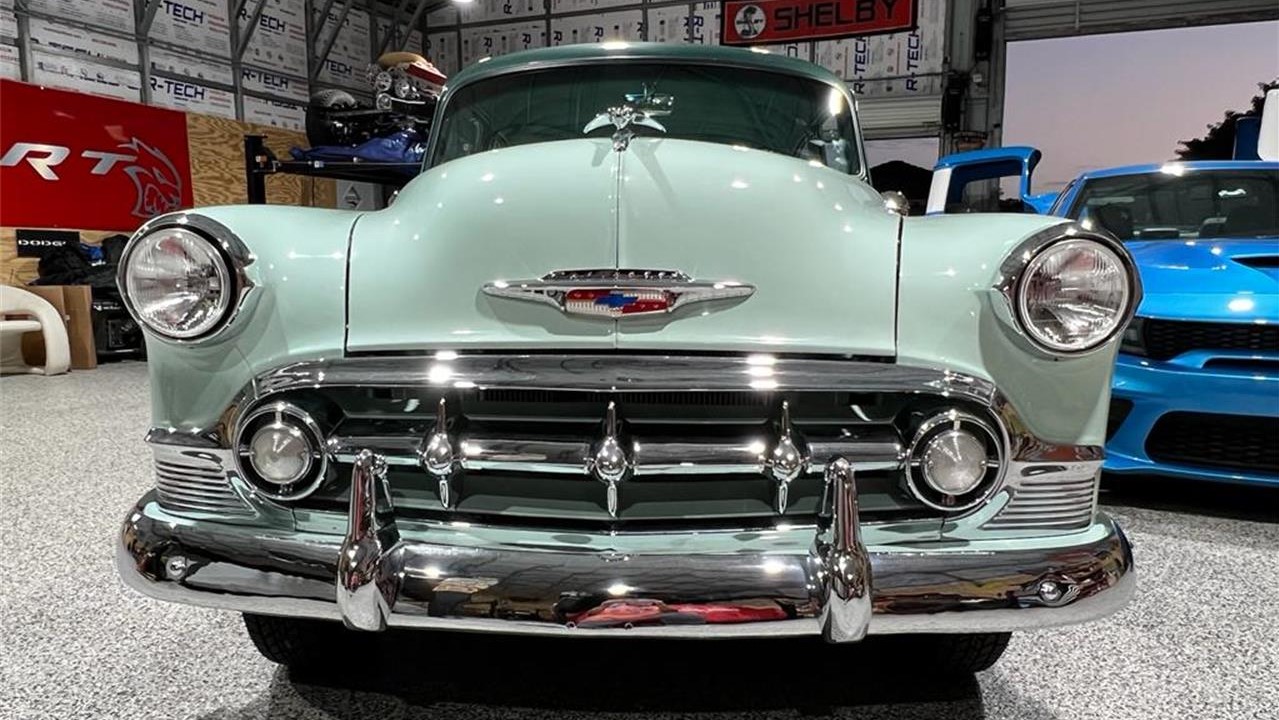
“One owner car with original title and original bill of sale,” the listing begins. “Same family for 69 years.”
Best of all, in addition to having received cosmetic refurbishment, this 210 also received work to the drivetrain that included a recent rebuild of the 216cid inline-six engine, the three-speed Synchromesh manual transmission, and the rear end. The work that was performed carries a three-year warranty that is transferable to the new owner, according to the listing.
The restoration of this 210 involved a comprehensive two-year build with “every nut and bolt” being replaced accordingly. Some of the photographs included in the gallery show the car in various phases of the process. The brakes, suspension, glass, weather stripping, wiper system, instruments, and lights were all replaced during the tear-down. Most of the equipment remains period-correct, although a newer Bluetooth radio was added to provide more modern sound with a retro look.
The 150 model first launched in 1953 as an economy-minded offering in the Chevrolet lineup. It was distributed largely through fleet sales and was light on amenities to keep costs down. Even things like ashtrays, cigarette lighters, and mirrors were options for an extra cost.
This example from that initial model year shows well in its two-tone Surf Green and Woodland Green, and a set of new Coker wide whitewall tires add to the period-correct look. True to the low-budget 150 original intent, the car is void of side moldings, although it does have a set of wheel skirts over the rear fenders.

On the interior, the upholstery carries through with the same two-tone color scheme. Even the trunk is lined with vinyl material and Chevrolet bowtie-branded embroidery. The seller has included a video showing the underbody, exterior, and interior.
The seller is asking $33,000 for this 150 which is complete with a three-year warranty for added peace of mind.
To view this listing on ClassicCars.com, see Pick of the Day.
Very late in posting this, but life is busy, so I do what a can when I can. Here are 10 cars that really stood out to me at the London Concours 2022 that I’ve never seen before. In no particular order. Just wow on these cars, I love a rare and unique car.
.
1996 Mercedes-Benz F200 ‘Imagination’

Featured in the coachbuilt and concepts concours class. What a sleek and beautiful looking car. Revealed at the 1996 Paris motor show, the electro- transparent roof would be seen on the Maybach 62, the butterfly doors would be used on the McLaren Mercedes SLR and the active body control suspension system would eventually be introduced on the 1999 CL- Class.
.
2005 Bizzarrini Ghepardo

I like this car a lot. Unique looking, very low, just cool, period. The Ghepardo concept was revealed at the 2005 Geneva Auto Salon, with an all-aluminium body – a Bizzarrini calling card – and the shape inspired by the legendary 5300 GT. The engine came from a Renault – derived GP2 engine capable of revving to 10,000 rpm. The car was said to be capable of 0 to 62 mph in 3.8 seconds, with a top speed of 225 mph.
.
1998 Jaguar XK180 concept car

I think that this Jaguar has to be one of the coolest Jaguar’s ever made and not put into full production. What a shame. Looks very cool dont’t you think?
Built to mark 50 years of the XK120, the XK180 caused a huge stir at the 1998 Paris motor show. It was designed by XJ220 stylist Keith Helfet as a modern interpretation of the D-Type and E-Type. Although enthusiastically received, only two cars were ever built: this example is owned by the Jaguar Daimler Heritage Trust.
.
1956 Maserati A6G 2000 GT

Very elegant and a beautiful looking car. Just 60 A6G 2000 GT’s were built, with most being bodied by Zagato, Pininfarina or Frua. However, this particular example is one of 21 crafted by Turin- based Carrozzeria Allemano.
.
1960 Chrysler 300F Convertible

Featured in the fins and chrome and class. Very cool. You’d certainly need to have a large garage to fit this beauty in.
.
1954 Alfa Romeo 1900C SS Zagato

Featured in the coach built and concepts class. Another Zagato beauty.
The 1900 was Alfa’s first production-line car, but while upper management heralded the cost savings, general manager Iginio Alessio feared for the future of the Italy’s design houses and stylists. He instructed the car to be made so that five coachbuilders could use the unitary frame as the basis for their creations.
Zagato created this example for Joakim ‘Jo’ Bonnier, who won with it at the 1955 Swedish Grand Prix, and took a class victory at the Karlskoga circuit a week later. Bonnier then sold the Alfa to Carl Lohmander, who competed in it at Denmark’s Roskilde Ring before inviting Bonnier to drive it at Oulton Park’s 1955 International Trophy. Again he took class victory.
Lohmander raced the car at several events, such as the Avusrennen in Berlin, and the car was featured in the December 1955 edition of Motor-Revy. The car has since remained in Sweden and Norway, continuing to compete in many events.
.
1991 Ronart Lightning GT

Featured in the coach built and concepts class. Not a beauty in my opinion, but unique for sure.
Built on the principles of quality and correctness – and V8 talk – the Peterborough – produced and built Ronart Lightning was intended to be a leading grand tourer. The body is all carbon fibre, and the space frame chassis and monocoque were designed in house with bespoke suspension.
The engine and gearbox came from Ford’s Mustang SVT, and it’s 4.6-Litre V8 provided 320bhp. A 500bhp supercharged version was also offered. The car was ahead of its time, featuring sat-nav, integral cooling fans in the leather Recaro seats, and it also had detachable carbon fibre roof panels. Only six examples were built before production ceased, and this is one of justice three that are thought still to exist. The fifth car built, it was the Ronart demonstrator and specified by the company chairman.
.
1967 Rolls-Royce Silver Shadow Pick-Up

Featured in the coach built and concepts class. Two phrases I never thought I would hear in the same sentence Rolls-Royce and pick up. Amazing that this car even exists and respect to the original owner for commissioning its creation.
The brief for this unusual conversion was simple: build the ultimate Goodwood Revival tow vehicle. The car’s owner, a prominent historic motorsport enthusiast, entrusted Essex based Clarke and Carter with transforming a 1967 Silver Shadow into an elegant pickup.
In fact, the example the specialist was given had already been converted, but to a rather lesser standard- so to attain the quality required the restorers virtually had to start all over again.
The result is befitting of the authentic cars ethos, with hand-crafted detailing applied throughout. Fun flourishes included the ‘pick-up’ badging, created in a script mimicking what you would find on an original Silver Shadow.
.
1935 Jaguar SS1 Airline Saloon

Featured in the great British history class. I just think this is a cool car, very unique looking and a unusual colour.
The SS1 offered extravagant looks for a palatable price, and was available in fixed head coupe, tourer, sports saloon and drophead coupe form. It was not intended as a performance car, with up to 20 BHP available.
The Airline coupe was styled to get the most out of the six- cylinder engine, with a smooth air-sparing design that reflected the art deco fashion of the time. Only 624 were produced, and this one was originally delivered in March 1935 to Captain S Clough by Glovers of Harrogate.
.
1929 Vauxhall Hurlingham 20-60 Speedster

Featured in the great British history class. Vauxhall built its’s first car in 1903, making it Britains oldest car maker. Named after the Vauxhall area of Lambeth where the original works were located. In 1905 Vauxhall moved to Luton where between 1927 and 1933 less than 50 Hurlinghams were built. To date only 19 cars are known worldwide with 5 in the UK. The Hurlingham captured the art-deco spirit of the 20’s with a centre body line running from the speedbird mascot to cropped boat tail. Scuttle mounted marine style vents, twin window-screens and flip up mother-in-law dicky seat complete the design.
I hope you enjoyed seeing these cars as much as I did. Many of these cars I saw for the very first time at the London Concours, which is why I love this event so much and cannot wait for next years event.
Have you seen our video (below), where we take a walk around the London Concours 2022, if not, here it is (and don’t forward to subscribe to our YouTube Channel).

The post 10 Rare Cars that stood out at London Concours 2022 appeared first on My Car Heaven.
Bulky car speakers and speaker grilles could become a thing of the past if LG’s new Thin Actuator Sound Solution technology takes off.
The Thin Actuator Sound Solution is a speaker roughly the size of a passport, measuring just 2.5 mm (0.1 inch) thick, with a weight of approximately 1.4 ounces. LG was able to develop the inner workers by leveraging its film-type exciter technology used in digital displays.
Instead of vibrating a cone like in a conventional speaker, the thin speaker can vibrate materials found inside the car. LG said the speaker can be installed in various elements around the cabin, such as the dashboard, headliner, roof pillars, headrests, and even display panels. Multiple units can be installed to create an immersive, 3D sound experience, the company said.
The light and compact design means car designers will be able to free up space within the cabin, while also reducing a vehicle’s curb weight.
There’s one additional benefit: LG said the Thin Actuator Sound Solution also avoids using rare earth materials such as neodymium, which is a common material in conventional speakers.
LG plans to showcase the Thin Actuator Sound Solution at the 2023 CES in January and said the speaker will be commercialized starting in the first half of 2023.
LG isn’t the first company to showcase such technology, though it’s likely to become the first to commercialize it at scale. German firms Continental and Sennheiser presented similar technology at the 2020 CES, but the companies haven’t rolled out a production version.
This article was originally published by Motor Authority, an editorial partner of ClassicCars.com.


